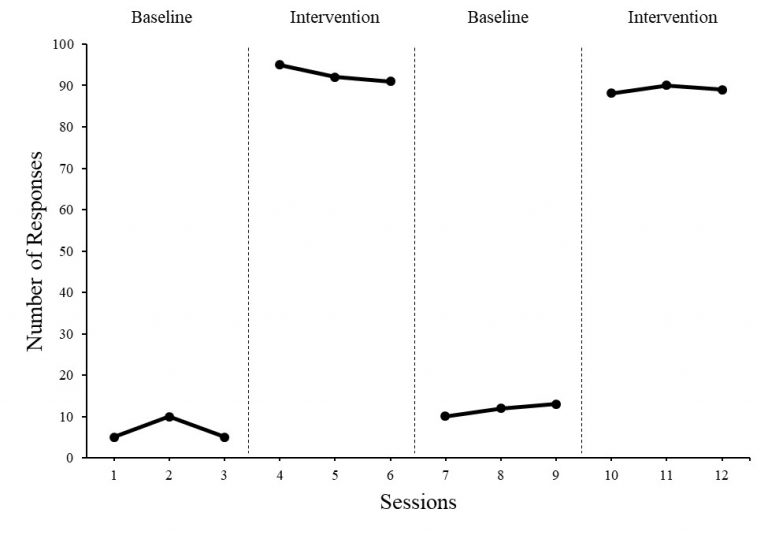Table Of Content

If you and your partner are having difficulty conceiving a child, you are not alone. Infertility is a source of anxiety, distress and anguish for more than 70 million Americans. If male infertility or a previous vasectomy are preventing you from starting or expanding your family, we can help.
Discovery of new pyrimidopyrrolizine/indolizine-based derivatives as P-glycoprotein inhibitors: Design, synthesis ... - ScienceDirect.com
Discovery of new pyrimidopyrrolizine/indolizine-based derivatives as P-glycoprotein inhibitors: Design, synthesis ....
Posted: Sat, 05 Jun 2021 07:00:00 GMT [source]
Extreme Makeover
Research on HTE has shown variability in outcomes in RCTs, and in some studies very few people actually exhibit the benefits of that treatment (Williams, 2010). One approach in RCTs is to assess moderators of treatment response to identify individual differences that may predict response to a treatment. This approach may not limit variability in response, and substantial reduction in variability of treatment for subgroups in comparison to the group as a whole is far from assured. Even if variability is reduced, the average effect for that subgroup may not be representative of individual members of the subgroup. In an alternating treatments design, two or more treatments are alternated relatively quickly on a regular schedule. In an alternating treatments design, two or more treatments are alternated relatively quickly on a regular schedule.
Expanded Treatment
However, that's not to say that the upper floor of an inverted floor plan can't have a bedroom -- in fact, many do. By keeping at least one bedroom on the same floor as the living area, a flipped floor plan makes a lot of sense from a multigenerational household perspective, as it gives the various members of the household both privacy and easy access to the living area. In a traditional multistory home, the kitchen and living area are on the first floor, and the bedrooms are upstairs. An inverted floor plan swaps the floors, putting the bedrooms on the first floor and the living area on the second or highest floor. The uniform failure of drug trials in Alzheimer’s influenced Bredesen’s desire to better understand the fundamental nature of the disease.
Why You Should Consider an Inverted Floor Plan
Figure 10.4 Results of a Generic Single-Subject Study Illustrating Level, Trend, and Latency. The male infertility patients that Dr. Werthman sees have frequently been told by other fertility doctors that they could not be helped, yet most respond quite well to the correct surgical procedure administered by Dr. Werthman. Sensitive to the needs of his patients, Dr. Werthman has worked tirelessly to expand the options available to treat male infertility. He uses the techniques that have been proven to consistently get the best results for patients, with the least amount of discomfort. Before the surgery begins, Dr. Werthman conducts a test to see if sperm are located within the vas deferens at the original vasectomy site.
Multiple-Baseline Design Across Settings
It is common for inverted floor plans to feature elevated outdoor spaces with the use of decks and balconies. Bredesen said the program’s downsides are its complexity and that the burden falls on patients and caregivers to follow it. Their most common complaints were the diet and lifestyle changes, and having to take multiple pills each day. The study was conducted Dr. Dale Bredesen of the UCLA Mary S. Easton Center for Alzheimer’s Disease Research and the Buck Institute for Research on Aging. An AB design is a two-part or phase design composed of a baseline ("A" phase) with no changes and a treatment or intervention ("B") phase.[4][5] If there is a change then the treatment may be said to have had an effect.
No single drug has been found to stop or even slow the progression of Alzheimer’s, and drugs have only had modest effects on symptoms. “In the past decade alone, hundreds of clinical trials have been conducted for Alzheimer’s, without success, at an aggregate cost of over $1 billion,” said Bredesen, who also is a professor at the Buck Institute. Each year, more than 500,000 vasectomies are performed, with about 5% of those men returning to seek a vasectomy reversal at some time. When considering having a reversal, it is important to find a vasectomy reversal surgeon who consistently performs the procedure. To say that Center Director Dr. Philip Werthman is a specialist in vasectomy reversal is an extreme understatement he actually developed what is one of the gold standards in microsurgical vasectomy reversal. A vasectomy reversal is done to restore the normal flow of sperm and a man’s fertility.
If a measure changes with repeated testing without intervention, it may not be useful for an SCED unless steps can be taken to mitigate such reactivity, such as more unobtrusive monitoring (Kazdin, 2021). Given that the effects of interventions are evaluated over time, systematic environmental changes or maturation could influence the relationship between a treatment and outcome and thereby obscure the effect of a treatment. However, the design logic of reversal and multiple baseline designs largely control for such influences.
A reversal design graph is used to visualize data from a within-subject A-B-A experimental design. Next, the researcher presents the independent variable—usually some type of treatment or intervention—and records any changes in behavior (phase B). Lastly, the independent variable is removed and behavior is measured at the baseline again (phase A).
Terahertz chiral subwavelength cavities breaking time-reversal symmetry via ultrastrong light-matter interaction
A third factor is latency, which is the time it takes for the dependent variable to begin changing after a change in conditions. Firstly, in line with the expectation that the outcome returns to baseline levels, reversals may require removal of the treatment. A washout period may be placed in-between phases if the effect is not immediately reversible; for example, a drug washout period could be planned based on the half-life of drug. Secondly, the intervention should have a relatively immediate effect on the outcome. If many weeks to months are needed for some interventions to show effects, a reversal design may not be optimal unless the investigator is willing to plan a lengthy study.
His laboratory has found evidence that Alzheimer’s stems from an imbalance in nerve cell signaling. In the normal brain, specific signals foster nerve connections and memory making, while balancing signals support memory loss, allowing irrelevant information to be forgotten. But in people with Alzheimer’s, the balance of these opposing signals is disturbed, nerve connections are suppressed and memories are lost. Multiple baseline tests are used to determine the helpfulness of an intervention. By focusing daily data collection on one participant, researchers can prepare to expand their research.
The plotting of individual participants’ data, examining the data, and making judgements about whether and to what extent the independent variable had an effect on the dependent variable. The level of responding before any treatment is introduced and therefore acts as a kind of control condition. The researcher waits until the participant’s behaviour in one condition becomes fairly consistent from observation to observation before changing conditions. The dependent variable ranges between 10 and 15 units during the baseline, then has a sharp decrease to 7 units when treatment is introduced. However, the dependent variable increases to 12 units soon after the drop and ranges between 8 and 10 units until the end of the study.
The beginning phase of an ABA design which acts as a kind of control condition in which the level of responding before any treatment is introduced. When the researcher waits until the participant’s behavior in one condition becomes fairly consistent from observation to observation before changing conditions. This means plotting individual participants’ data, looking carefully at those plots, and making judgments about whether and to what extent the independent variable had an effect on the dependent variable. In this design the baseline phase is followed by separate phases in which different treatments are introduced.

The most basic single-subject research design is the reversal design, also called the ABA design. In visually inspecting their data, single-subject researchers take several factors into account. One of them is changes in the levelOne factor that is considered in the visual inspection of single-subject data.

The number of participants needed for a fully powered RCT may be substantially different from the number projected from a small-sample RCT. These small, underpowered, early phase translational studies may provide too large an estimate of an effect size, leading to an underpowered RCT. Likewise, a small-sample RCT can lead to a small effect size that can, in turn, lead to a failure to implement a potentially effective intervention (Kraemer et al., 2006).
Figure 10.4 "An Approximation of the Results for Hall and Colleagues’ Participant Robbie in Their ABAB Reversal Design" approximates the data for Robbie. Figure 10.4 “An Approximation of the Results for Hall and Colleagues’ Participant Robbie in Their ABAB Reversal Design” approximates the data for Robbie. Finally, while the emphasis in personalized medicine is the identification of an optimal treatment plan for an individual person, situations in which multiple baselines across people prove relevant for precision medicine may arise. In a similar vein, differential response to a common treatment in a multiple-baseline-across-people design can help to identify individual differences that can compromise the response to a treatment. In an alternating treatments designA single-subject research design in which multiple treatments are alternated rapidly on a regular schedule., two or more treatments are alternated relatively quickly on a regular schedule. For example, positive attention for studying could be used one day and mild punishment for not studying the next, and so on.
As an example, consider a study by Scott Ross and Robert Horner (Ross & Horner, 2009).Ross, S. They were interested in how a school-wide bullying prevention program affected the bullying behavior of particular problem students. At each of three different schools, the researchers studied two students who had regularly engaged in bullying. During the baseline phase, they observed the students for 10-minute periods each day during lunch recess and counted the number of aggressive behaviors they exhibited toward their peers.

No comments:
Post a Comment